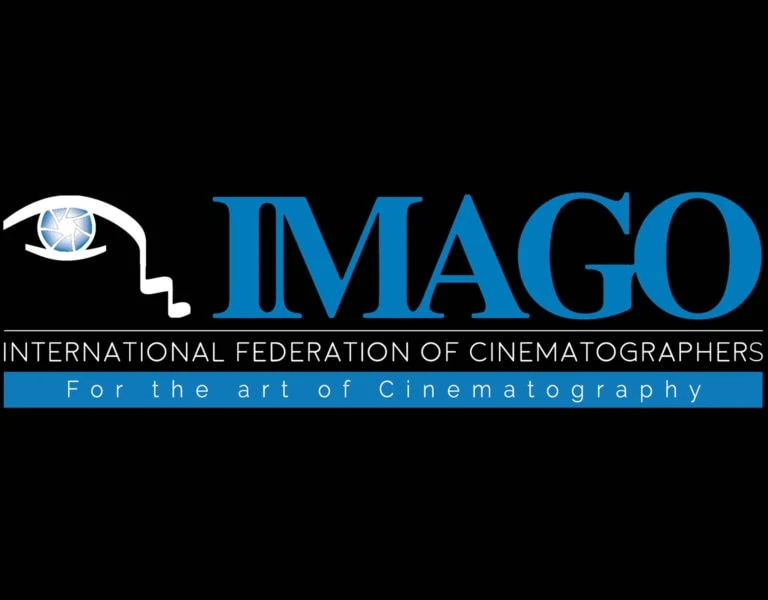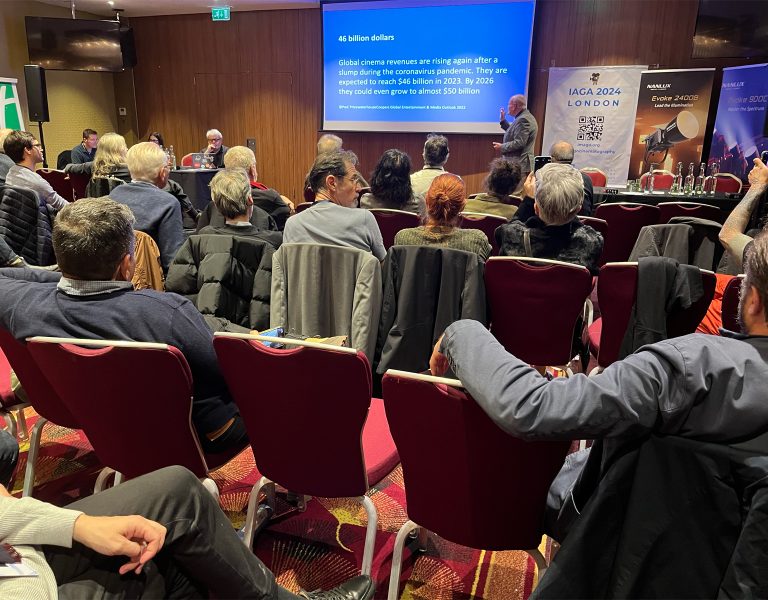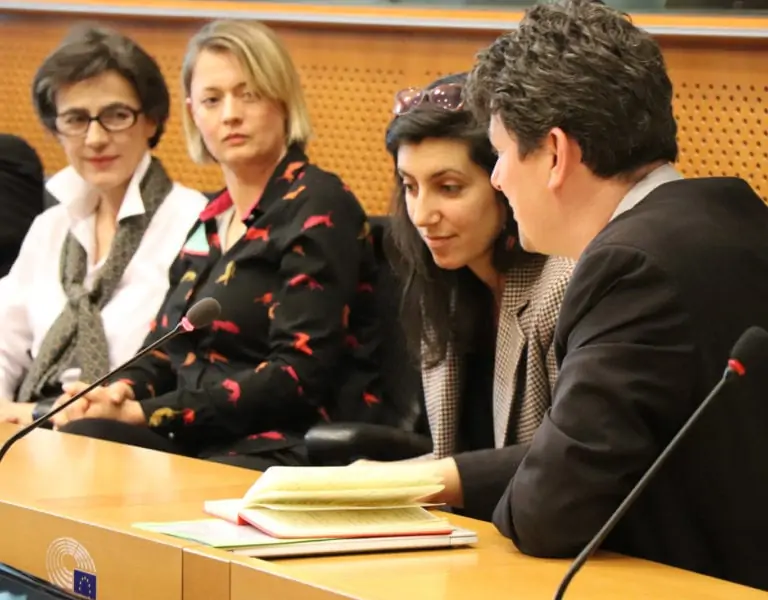Home » Features » Opinion » IMAGO News »
FACING THE FUTURE
Specialist lawyer Dr Cristina Busch and cinematographer Argyris Theos GSC, chair of the IMAGO Authorship Committee, examine the impact of artificial intelligence on the art of cinematography from a creativity and authorship perspective.
Will artificial intelligence (AI) take our jobs, or is it making us more creative? Can our creative work, when used to train the algorithms, be compensated via copyright protection? These are only a few of the questions raised today, relating to artificial intelligence vs. cinematography.
But to what extent do algorithmic systems have an impact on authorship and co-authorship of a cinematographic creation?
Since the advent of motion pictures by the Lumière brothers in 1885, film creativity and technology have evolved hand-in-hand. Creative filmmakers have been asking technologists for new solutions, while so many inventions have given filmmakers room for creativity. In this sense, the influence of artificial intelligence on film is already profound.
For the time being, AI has not replaced the human creativity of audiovisual creators, but rather complements their work. AI applications are employed in various stages of film production, including script analysis, locations, visual effects, and post-production. It is evident that AI is pushing the boundaries of creative expression.
From a technological point of view, we can identify four levels of AI evolution:
- Reactive machines 2. Limited memory machines 3. Theory of mind 4. Self-awareness
Currently we are at level 2, and technology needs to get up to level 4 to be genuinely creative. AI algorithms are currently referred to as “stochastic parrots”. This means that for the time being, AI machines are not in a position to form a new art movement, like expressionism or cubism – they only repeat what has been made.
But there is a catch: it is quite difficult to distinguish between the two factors of technology vs. creativity. This creates new questions: if the algorithm is producing a new “work”, who benefits from copyright protection? The company that owns it? The programmer who wrote the algorithm? Or should it be considered public domain and free use? And what about the authors of pre-existing works that were fed to the machine as teaching tools? Will they be compensated?
It is true that legislation is working towards opt-out options, to protect authors from their work getting copied, and so are some software manufacturers. In our view, this should be incorporated into the work’s metadata – in the cinematographers’ case, into the camera originals. For this reason, the IMAGO Authorship Committee asks all camera manufacturers (alphabetically ARRI, Canon, Red, Panasonic, Sony, etc.) to urgently work towards a common metadata format that will offer cinematographers the opt-out option. This will also be of great value for all other industry creatives and will give time until a global remuneration system might be established for the exploitation of works by training the AI system.
Final notes
Will AI replace cinematographers? Not for the foreseeable future. However, it is quite possible that AI will soon replace crew members that would eventually develop into cinematographers. This means that the professional community, feeding the industry with new talent will get smaller and smaller, resulting in fewer creatives in the not-so-distant future.
The (mostly) autonomous creations produced by the new AI technologies present a significant challenge to cinematic contributions from a copyright perspective. It is the responsibility of legislators to close any potential loopholes in a way that is compatible with technological innovation, multimillionaire investments and the rights of human authors to remuneration and freedom of creation, as well as a society with a diverse and high-quality cultural offering.
This article is illustrated with re-enactment scenes created with AI technology by Viktoria Vellopoulou for the documentary film Syrrako 1821: The Revolution of the Vlachs. Vellopoulou uses various AI apps to get her results in stills mode, before they are animated by the team. These give the film both an immersive feeling and a high-production value.
Definitions
- Artificial intelligence (AI) refers to the simulation of human intelligence processes by machines, encompassing tasks such as learning, reasoning, problem-solving, perception, and decision-making. AI systems aim to replicate cognitive functions typically associated with human intelligence, leading to the development of intelligent agents capable of performing complex tasks autonomously.
- A “work” is defined as the concrete manifestation of an idea, capable of being perceived by the human senses (no protection for “simple” or “mere ideas”). In most countries, this work must be “original”.
- Under EU copyright law and jurisdiction, the required standard of originality is the “author’s (human) own intellectual creation”. The author’s own intellectual creation is present when human authors can exercise free and creative choices and put their personal stamp on the work.
- In the United States, the courts have established that a work must be “independently created by the (human) author” and possess at least “some minimal degree of creativity” in order to qualify as original.
- In the case of audiovisual works, the challenge of analysing authorship from a legal perspective is particularly significant. A single film involves several creative professionals, including a scriptwriter, a director, a cinematographer, a composer, an editor, a production, a costume, a make-up designer, etc. In most countries, the value of each creator’s contribution must be assessed on a case-by-case basis. In other countries certain creatives, including cinematographers, are directly defined as co-authors, in other countries cinematographers are presumed to be excluded from co-authorship, but still could be considered author of the photographic works fixed in the audiovisual work.
















